Growing Lantana
Lantana is a vibrant and resilient flowering plant known for its colorful clusters of blooms and ability to attract butterflies. Whether used as a ground cover, in borders, or in containers, lantana offers a cheerful display that brightens gardens and landscapes. Here’s everything you need to know about growing and caring .
Definition and Benefits
Lantana, belonging to the genus Lantana, is native to tropical regions of the Americas and Africa. It is celebrated for its adaptability, ease of care, and various uses in landscaping. Key benefits include:
- Vibrant Colors: Lantana flowers come in a range of colors, including yellow, orange, pink, and purple, providing a lively visual impact.
- Attracts Pollinators: The fragrant blooms attract butterflies, bees, and hummingbirds, enhancing the biodiversity of your garden.
- Drought Tolerance: Once established, lantana is drought-tolerant, making it an excellent choice for low-water gardens.
- Versatile Uses: Lantana can be used as ground cover, in hanging baskets, or as a border plant.
Basics
- Common Name: Lantana
- Botanical Name: Lantana camara and Lantana montevidensis (among others)
- Family: Verbenaceae
- Plant Type: Perennial shrub or annual in cooler climates
- Mature Size: 1–4 feet tall and wide, depending on the variety
- Sun Exposure: Full sun
- Soil Type: Well-draining soil; adaptable to various soil types
- Soil pH: Neutral to slightly acidic (6.0 to 7.0)
- Bloom Time: Spring to fall
- Flower Color: Yellow, orange, pink, purple, bicolor
- Hardiness Zones: 8-11 (USDA); often grown as an annual in colder regions
- Native Area: Native to the Americas and Africa
Choosing Which Lantana to Grow
Several popular lantana varieties cater to different gardening needs:
- Lantana camara (Common Lantana)
Description: Known for its large clusters of brightly colored flowers, often changing shades as they mature.
Ideal Uses: Excellent for borders, hedges, or as a focal point in flower beds. - Lantana montevidensis (Trailing Lantana)
Description: Features a spreading habit with trailing stems and smaller flower clusters.
Ideal Uses: Perfect for ground cover and hanging baskets due to its sprawling nature. - Lantana ‘New Gold’
Description: A compact variety with golden-yellow flowers that bloom profusely.
Ideal Uses: Great for mixed borders, containers, and as a low-maintenance ground cover.
When to Plant
Getting the Planting Site Ready
Select a location that receives full sun (at least 6 hours of direct sunlight daily). Ensure the soil is well-draining, as lantana does not tolerate soggy conditions.
Timing for Planting
- Indoors: Start seeds indoors 8-10 weeks before the last frost date.
- Outdoors: Plant after the last frost in spring for the best results.
Specific Timing for Different Regions
- Tropical Areas: Can be planted year-round.
- Temperate Regions: Best planted in late spring to early summer.
Growing Lantana
Planting Location
Lantana thrives in full sun, so choose a spot that offers plenty of light. Ensure good air circulation around the plants to prevent fungal diseases.
Spacing
Space lantana plants 12 to 24 inches apart, depending on the variety, to allow for proper growth and air circulation.
Care and Maintenance
Watering
Water lantana regularly during the first few weeks after planting to help establish roots. Once established, allow the soil to dry out between waterings. Overwatering can lead to root rot.
Fertilization
Lantana generally does not require heavy fertilization. You can apply a balanced, slow-release fertilizer in the spring, but be careful not to over-fertilize, as this can lead to excessive foliage with fewer blooms.
Pruning and Maintenance
Prune lantana regularly to encourage bushier growth and remove any dead or leggy branches. Deadheading spent blooms can extend the flowering period.
Pest and Disease Management
Lantana is relatively pest-resistant but can occasionally suffer from aphids, whiteflies, or spider mites. Monitor for pests and treat infestations with insecticidal soap or neem oil.
Pests and Diseases
Identifying and Treating Diseases
Common diseases affecting lantana include powdery mildew and root rot. Ensure good air circulation and avoid waterlogging to prevent these issues. Treat fungal infections with fungicides if necessary.
Identifying and Fixing Signs of Distress
Watch for yellowing leaves or stunted growth, which may indicate nutrient deficiencies or overwatering. Adjust your care routine accordingly.
Planting in the Garden
How to Use Lantana
Lantana is versatile and can be used in various ways, including:
- Borders: Create colorful borders in garden beds.
- Ground Cover: Use trailing varieties to cover bare soil and prevent erosion.
- Containers: Combine with other flowers in hanging baskets or patio pots.
Companion Planting
Pair lantana with other drought-tolerant plants such as succulents, salvias, or ornamental grasses for a visually appealing garden.
End of Season Care
As the growing season comes to an end, consider the following care tips:
Indoor Plants
If you live in a cooler climate, bring container lantana indoors before the first frost. Reduce watering during the dormant winter months.
Outdoor Plants
In warmer climates, lantana can survive winter outdoors; however, in colder regions, consider treating them as annuals.
Propagation
Lantana can be propagated through stem cuttings or seeds. Take cuttings in the spring, allow them to callus for a few hours, and plant them in a well-draining mix.
Additional Tips for Successful Growth
Humidity
Lantana prefers moderate humidity levels. They thrive in dry conditions.
Temperature
Ideal temperatures range from 65-80°F (18-27°C). Protect them from extreme cold.
Soil Quality
Use well-draining soil enriched with organic matter for optimal growth.
Seasonal Care Adjustments
Consider adjusting your watering and fertilization routine with the changing seasons. In hotter months, more frequent watering may be necessary, while in cooler months, less water will suffice.
Monitoring Growth
Keep an eye on the growth and overall health of your lantana plants. Regular monitoring allows for timely interventions in case of pest infestations or disease symptoms.
With this comprehensive guide, you’re well-equipped to grow and care , ensuring a vibrant and colorful display in your garden. Happy gardening!


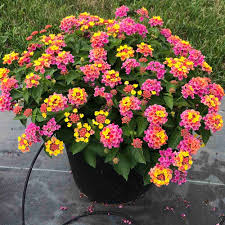
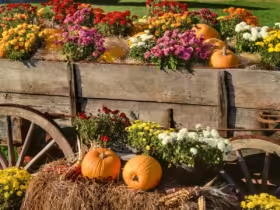
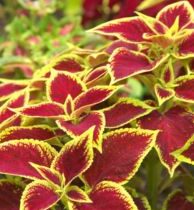
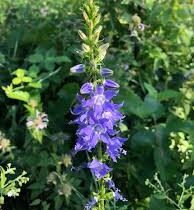
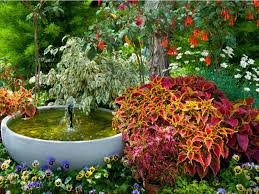
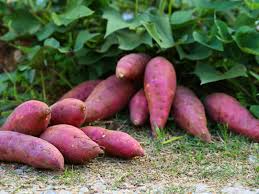
Leave a Reply
View Comments